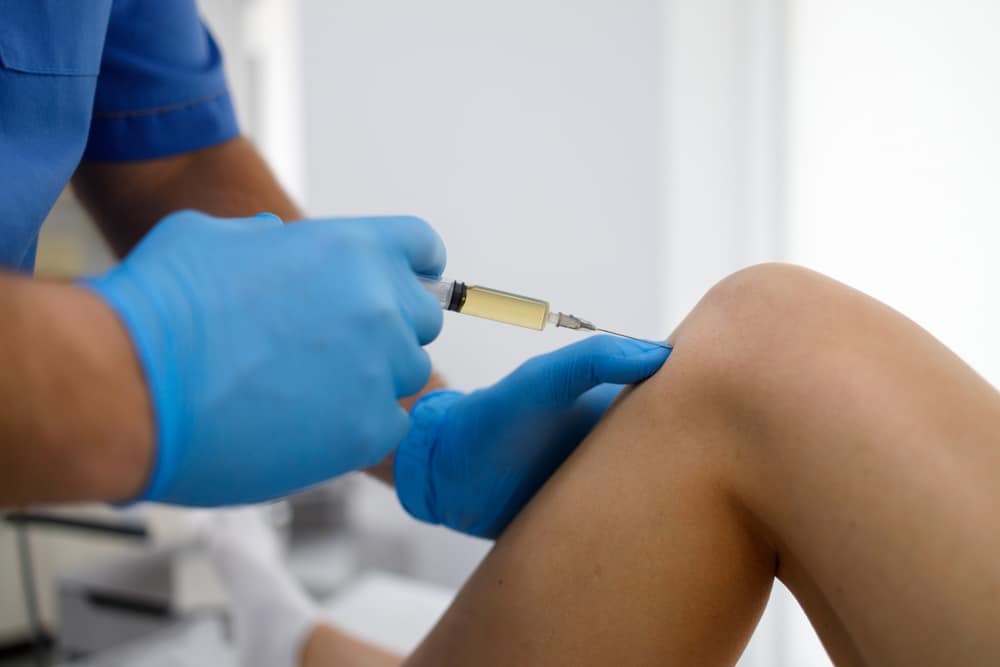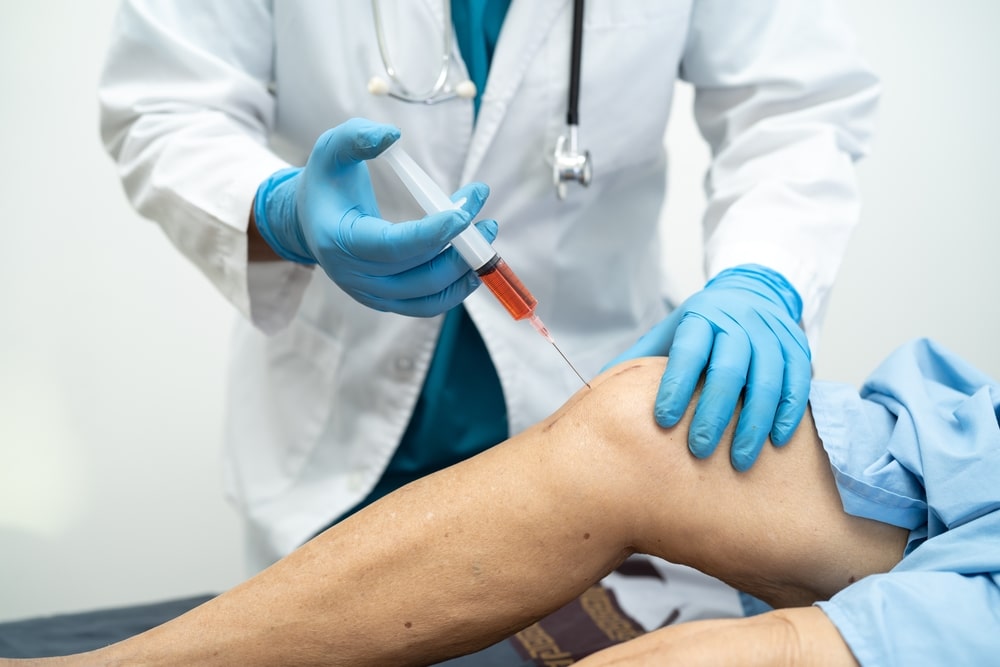Living with persistent joint pain can significantly impact your quality of life. Simple activities like climbing stairs or picking up groceries become challenging when your joints ache with every movement. If you’ve tried over-the-counter medications without success, joint injections might offer the relief you need.
At Premier Med Group, our pain management clinic in New Jersey and Pennsylvania specializes in advanced treatments for chronic joint pain. In this guide, we will explain everything you need to know about joint injections and how they can provide effective relief.
Understanding joint injection therapy
According to the American Public Health Association, musculoskeletal (MSK) conditions are the biggest cause of disability in the U.S., representing over half of all chronic conditions among adults aged 18 and older.
Joint injections deliver medication directly into the affected joint, providing targeted relief where you need it most. Unlike oral medications that travel through your bloodstream, these injections work precisely at the source of your pain.
The procedure is minimally invasive and typically takes less than half an hour. Your doctor will clean the area and may use ultrasound or X-ray guidance to ensure accurate placement. Many patients report feeling immediate relief, though full benefits often develop over several days.
Joint injections are particularly effective for conditions like arthritis, bursitis, and injuries that cause persistent inflammation. They serve as a bridge between conservative treatments and surgery for many patients seeking pain relief.
Types of Joint Injections for pain management
According to the World Health Organization, approximately 1.71 billion people globally were affected by musculoskeletal disorders in 2022. Fortunately, several types of joint injections are available, each serving different purposes in your pain management plan.
Hydrocortisone Steroid Injections
Steroid injections reduce inflammation quickly and can provide weeks or months of relief. These are often the first type offered when other treatments haven’t worked. Though effective, doctors typically limit their frequency to prevent potential side effects to the surrounding tissues.
Hyaluronic Acid Injections
Hyaluronic acid injections work differently by supplementing your joint’s natural lubricating fluid. Often called “gel shots,” these injections can improve mobility and comfort, particularly for knee pain relief. Their effects tend to last longer than steroid injections for many patients.
Other Regenerative Injections
Newer options include regenerative (Platelet-Rich Plasma (PRP) Therapy) treatments that use components from your own body to potentially stimulate healing while reducing pain. These specialized joint injection therapy options are gaining popularity for their longer-lasting effects.
The Joint Injection Procedure: Before, During, and After

Before receiving joint injections, your pain management specialist in New Jersey and Pennsylvania will thoroughly evaluate your condition. This assessment helps determine which type of injection would benefit you most.
During the Injection Therapy
Here’s what happens during the procedure:
- You’ll be positioned comfortably for optimal access to the affected joint.
- A local anesthetic may be applied to minimize discomfort.
- Your doctor will use imaging guidance for precise medication delivery.
- The actual injection typically takes only minutes to complete.
After the Injection Therapy
Here’s what you can expect after your procedure:
- You’ll rest briefly before being allowed to go home.
- It’s advisable to have someone drive you, especially after your first treatment.
- Minor soreness at the injection site is normal but typically resolves quickly.
- Most patients resume normal activities within a day.
- Your doctor may recommend limiting strenuous exercise for a brief period.
How Joint Injection therapy addresses different pain conditions
According to the CDC, an estimated 58.5 million adults in the U.S. aged 18 and over have arthritis, with 25.7 million experiencing activity limitations due to the condition. Joint injections can be tailored to address various pain conditions throughout the body. Your doctor will recommend the most appropriate treatment based on your specific condition and medical history.
Common applications of joint injections include:
- Knee pain relief: Steroid and hyaluronic acid injections show significant effectiveness for the body’s largest joint.
- Facet joint injections: These target small joints along the spine to relieve back and neck pain.
- Shoulder treatments: Shoulder injections help restore range of motion and reduce discomfort in this complex area.
- Hip injections: Hip injections can provide relief for arthritis and other conditions affecting mobility.
- Ankle and wrist treatments: Smaller joints also respond well to targeted injection therapy.
Premier Med Group: Your Pain Management Partners in New Jersey and Pennsylvania
Joint pain shouldn’t limit your life or define your future. At Premier Med Group, we understand how joint injections can transform your daily experience by reducing pain and improving mobility.
It’s important to understand the risks of ignoring joint pain and take proactive steps toward relief. Our team specializes in creating individualized treatment plans that address your specific needs. We combine joint injection therapy with comprehensive care recommendations to maximize your results.
Our doctors accept most insurance plans, including workers’ compensation, no-fault, and PIP (personal injury protection). Same-day appointments may be available. If you’re struggling with joint pain, contact Premier Med Group at (908) 904-1900 to learn how joint injections can help restore your comfort and mobility.
FAQs
How long do Joint Injections last?
The duration varies depending on the type of injection and your specific condition. Steroid injections typically provide relief for several weeks to months, while hyaluronic acid injections may last up to six months or longer for some patients.
Are Joint Injections painful?
Joint injections should only cause minimal discomfort. Your doctor will use a local anesthetic to numb the area before the injection, and the entire process is completed quickly.
How many injections will I need?
The number of injections you need depends on your condition and response to treatment. Some patients experience significant relief after a single injection, while others may benefit from a series of treatments spaced over time to maintain results.
How often can I receive Joint injections?
Steroid injections are generally limited to a few times per year to prevent potential side effects, while other types may be administered on different schedules based on your response and medical needs.
Does stem cell work for knee osteoarthritis?
As long as cartilage and joint fluid is available, stem cells can differentiate, because necessary factors are present in the fluid and matrix. Stem cell therapy can effectively treat knee pain and injuries, with success rates ranging from 70-80% for mild to moderate knee osteoarthritis. but in severe cases, with bone-bone contact, stem cell treatment is unlikely to work.



